"Teach, coach, mentor." These words, these ideals are what the hardworking NCOs live by at the Joint Readiness Training Center at Fort Polk, La. Tasked to provide realistic joint and combined arms training, the NCOs at JRTC work to develop Soldiers, leaders and units - from squad to brigade level - of our nation's joint contingency forces for success on future battlefields, as specified by Army regulation.
The overall objective at JRTC is to establish a training environment that replicates current operational environments, including the complexity and instability found in Iraq's and Afghanistan's COE. Supporting warfighting functions across a degree of full-spectrum conflict, the training center offers tough, realistic conditions similar to live combat through a wide array of possible tactical operations. Training scenarios and exercises are developed to suit each rotational unit or RTU, with planning phases beginning as early as 180 days out.
"We offer an a la carte menu," explained Sgt. Maj. Todd Tracy, JRTC's operations group G3/5/7 sergeant major. Detailed planning goes into each rotation, to include working with unit command groups to help develop their training concepts and operational orders. Pre-rotational training consists of "facilitating equipment training for units as well as leader training, all of which catalyze the building blocks for fully integrated, high-performance, collective training during each phase of the rotation," he added.
Tracy admits that despite personalized planning for RTUs, JRTC cannot afford to concentrate on individual units alone. They must also consider the big picture Armywide. "If the training helps one Soldier go downrange and return alive, then it's worth it," he said. "It's for the bigger cause."
Training center personnel caution against scripting, though. Smooth-running or scripted scenarios would not be conducive to replicating real combat situations, especially in such unpredictable environments as Iraq and Afghanistan. Tracy said the training must be dynamic.
JRTC of days old used to be "lock-step; it was based on doctrinal thinking," he explained. Through lessons learned and strategic shifts throughout the Army, leadership realized that using that approach was faulty. "It's hard to fight an enemy who has no doctrine."
Each phase of every rotation intricately builds upon the events that take place during previous stages. Rotations are comprised of the following, generalized phases: pre-rotational training, a situational training exercise or STX (also includes a command post exercise), and a force-on-force exercise. Live-fire exercises are conducted throughout most of the rotation as well, with the focus being at the platoon, company and special forces operational detachment level.
The STX phase is used to develop information, situations and events that continue to play out during the remainder of the rotation. Opposing forces, known as Geronimo inside "The Box," as the area of field operations is commonly referred, present units with varying degrees of different types of crises. The course of action RTUs take in regard to the crisis determines later events, and subsequently, affects the reactions made by Geronimo, played by Soldiers from the 1st Battalion, 509th Parachute Infantry Regiment and contractors from Cubic Corp.
For example, results from key leader engagements that take place during the STX determine how events will play out during the force-on-force exercise. Samples of lethal crises RTUs face include sniper attacks, kidnappings and improvised explosive device explosions. Nonlethal crises include requests for compensation due to property damage, locals selling armaments, and non-governmental organizations delivering food and water supplies.
Facts about JRTC and Fort Polk
Aside from JRTC, the Army offers three other primary combat training centers: the Battle Command Training Program, Fort Leavenworth, Kan.; the Joint Multinational Readiness Center, Hohenfels, Germany; and the National Training Center, Fort Irwin, Calif.
Each training center is considered a center of excellence with specific warfighting training objectives. BCTP covers training at the major theater level. JMRC and NTC concentrate between both the major theater and small-scale contingency levels. And JRTC focuses on the small-scale contingency level.
Base Realignment and Closure Commission recommendations in 1991 called for the closure of Fort Chaffee, Ark., where JRTC was originally located under U.S. Army Training and Doctrine Command. The training center relocated to Fort Polk, and now falls under U.S. Army Forces Command.
The Box now covers about 18 towns and villages across more than 11,000 acres in rural Louisiana. Driving from one side of The Box to the other can take over half an hour, even when driving on the hardball. Before 1991, many of the structures in The Box were old utility sheds and World War II-era buildings, which were rather dilapidated. But The Box has since been updated and transformed in order to replicate current operational environments.
Working closely with Hollywood set designers, JRTC has undergone a drastic makeover during the course of the last eight years, and new additions are still in the works. Interestingly, most buildings have been constructed from shipping containers, also known as MILVANS that are 20 feet to 40 feet in length.
The containers are covered, painted and decorated to look like they are authentic representations of the architecture found in the Middle East. Minute details are all around The Box, such as traffic and store signs in Arabic, making it easy to forget that it is an imitation environment, and one is not really downrange. Open markets in each village boast plastic replicas of fruits, vegetables and fresh cuts of beef and goat. Villages are inhabited by actors portraying specific roles, many speaking Arabic, making the experience all the more realistic.
The Box is practically self-sustaining. Since actors work around the clock during rotations, they prepare meals in quantities large enough to feed a village, often cooking authentic cuisine from the represented regions. Trainer-mentors take advantage of the home cooking as well.
Adding to the realistic surroundings and unique quality of the base, Fort Polk is home to hundreds of wild horses, believed to be descendants of old farm and cavalry horses. There is also a large wild hog population that roams freely.
Finally, JRTC's operations group humorously boasts that it is the only unit in the Army responsible for an active, working farm, which includes goats, chickens, tame horses and cows. Literally, once rotational units enter The Box, they are transported to a different world.
A Real Threat
Too often, news reports demonstrate the overwhelming danger IEDs cause Soldiers deployed downrange. In an effort to better prepare them for these encounters, JRTC has implemented an IED cell that teaches a series of classes.
During the planning phase, commanders identify their unit's objectives and focus and choose which IED classes they want their Soldiers to take. "We send them a sort of restaurant menu 180 days out, and they choose the courses based on the commander's intent," said Mat West, program manager for the counter-IED cell, who used to work as a trainer-mentor and Geronimo at the training center during his military career. The following is a sample of what some commanders might choose for their unit:
IED Consciousness Class: Offers an overview of different types of IEDs and current issues downrange. The class may be considered a refresher course but also introduces new counter systems and equipment.
Mine-Resistant Ambush-Protected vehicles: Presents a series of MRAP family vehicles so Soldiers become acquainted with the equipment.
Unmanned ground sensors: This course covers systems that use surveillance cameras placed on the ground in an IED engagement area or a known hotspot for IEDs.
Biometric BAT-HIIDE system: Teaches how to operate this central database for intelligence information, friendly and foe alike. The HIIDE is a handheld device used while on patrol and can take a photograph, retinal scan and fingerprints. Users can also type in additional data. The information is then downloaded into the BAT system, which is accessible to universal users. Originally, the HIIDE system could only hold about 2 megabytes per person; now an entire file, including typed data, runs around 584 bytes.
Site-exploitation process: Instructs Soldiers to treat events and new sites as a crime scene investigation and how to thoroughly investigate rooms, gather intelligence and evidence. Site-exploitation process and battlefield forensics are two different classes offered that are taught by subject-matter experts such as law enforcement partners who travel downrange with JRTC NCOs to keep abreast of lessons learned and help conduct mobile training.
Company Intelligence Support Teams: COIST classes teach the basics for conducting company intelligence gathering at the squad, platoon and company level. These teams gather intelligence and pass along the information in real time, allowing dissemination both vertically and horizontally. COIST teams present intelligence "from the ground up."
Robotics: This five-day course introduces different variants of robotic equipment currently used in the field.
Rapid equipment fielding: Provides a closer look at some of the newest equipment being fielded and issued in-theater, like new mine detectors.
Aside from teaching classes, West said his cell has key personnel who work in both Iraq and Afghanistan, collecting and analyzing data. "They figure out if this bread crumb leads to this crumb ... and finally you find the loaf of bread. That's the ultimate goal: Attack the network."
Subject matter experts have determined that a typical IED cell is comprised of a four-man team: a financier, who is the top guy; a bomb maker; a bomb transporter; and a bomb placer.
"That's the general way IED cells work in both theaters," West said. "The bomb placer is usually nothing more than some common guy just trying to earn some money to take care of his family. If he works a legitimate job on the economy over there, he might earn $30. Or, he can drop off an IED and make a hundred bucks. Most of them are not radical, jihad Islamists; they're just trying to survive," he said.
Alternatively, the bomb transporter is a little more sophisticated, he explained. He's the one who recruits the bomb placer. He delivers the bomb and gives instructions to the placer.
Next are the bomb makers, who have very distinct signatures. "Every bomb maker in the world has a specific signature to what he does. When we attack the network and find pieces of that, we can pinpoint a specific signature. For example, he might use yellow wires to tie off everything or wrap three strands of tape clockwise," West said.
Finally, the financier is usually someone who is popular within the neighborhood and might be on the city council or a businessman. But on the side, he's providing funding because of his beliefs.
"The key at JRTC," West said, "is every bad guy you capture will give you a bread crumb that leads you to the next guy in the network. If the Soldiers do it properly and use all the tools that are available to them, they'll be able to go through, attack and defeat the network."
Life at JRTC and Fort Polk
Operations at JRTC aren't exactly what they used to be, which means working at JRTC has changed as well. No longer are the training NCOs referred to as observer-controllers. They are trainer-mentors. Rotational units in the past may have felt more concerned about being gigged on discrepancies or mistakes rather than lessons learned, but that attitude has shifted due to the approach of the training personnel.
Staff Sgt. Pedro Gonzales, a TM with JRTC's operations group, said his role is to help "reinforce the RTU's strengths, or help improve their weaknesses and push them in the right direction for the fight in Iraq and Afghanistan. Everything that happens over there happens here at JRTC."
Gonzales, who has been a TM off and on for almost six years and has three deployments under his belt, said every RTU has its ups and downs. "They've just got to fight through their issues.
We try to teach and coach them in the right direction so they can think and make the mistakes here instead of in-country. The training is purposely planned to force that level of difficulty on the rotational units so they can really experience a good training environment," he explained.
As a current operations TM, Staff Sgt. Dawson Morse said he covers several different roles. "I focus on coaching, training and mentoring the battle NCOs, radio telephone operators and assisting with the battle captains. I am also the brigade commander's escort during STX lanes."
Morse helps train tactical operations center NCOs and RTOs on their duties and responsibilities before the command post exercise begins. "I'll sit them down, show them certain military doctrine and see if they understand what their actual role is - see if they know how to battle track, how to track their assets, receive information, distribute it amongst themselves within the tactical operations center, analyze it and make recommendations."
Perhaps the mind-set behind what it means to mentor others, which is at the heart of what it means to be an NCO, has transformed what it means to be stationed at JRTC and Fort Polk. Or perhaps it is the seriousness behind the reasons units train at JRTC to begin with - Iraq and Afghanistan.
NCOs stationed at Fort Polk and JRTC say it's a misconception to think negatively about being assigned there. Command Sgt. Maj. Edward E. Russell, brigade command and control task force command sergeant major, said, "Most people might think, 'Oh, I don't want to go to Fort Polk because of the location.' Little do they know ... shame on them. When I discovered I was going to Fort Polk, versus Korea or Fort Bliss, Texas, I had second thoughts. I got here, and my attitude did a complete turnaround. It's a great duty, and those young sergeants major might want to consider coming to JRTC if they have the skill set."
Russell said they are in need of personnel and challenge the Department of the Army to send experienced, qualified people who want to do the job. And, virtually every NCO and TM you speak with agrees with Russell in that the assignment at JRTC will propel the career NCO at explosive speed.
"You get here, and you go up real quick. Nothing's given to you," he explained. "There's a lot of reading and conceptual requirements, understanding the common operational picture of how things work. That light comes on, and you grow up quick here. It's a great duty position, and I wouldn't want to go anywhere else."
Great changes and exciting transformations have been happening at Fort Polk, explained Command Sgt. Maj. Jeffery Allan Hof, JRTC and Fort Polk command sergeant major. "The quality of life for families and troopers had not been at the forefront until the last couple of years. Gen. James Yarbrough, JRTC and Fort Polk commanding general, has done some extraordinary work to the infrastructure. We are now getting commanders who see that investing in Fort Polk is advantageous to our military community and the civilian community. Developing both communities will enhance everyone's quality of life."
Fort Polk, known as the "Home of Heroes," "is more than just 10 rotations a year in The Box," Hof exclaimed. "The other training centers contribute to the fight nowhere near like we do at JRTC and Fort Polk. The reality is they pale in comparison by a long shot!"
He explained that Fort Polk boasts power units such as the 4th Brigade Combat Team, 10th Mountain Division, which is currently deployed to Afghanistan on its third tour in support of the Global War on Terrorism.
The 1st Maneuver Enhancement Brigade, which Hof said is the most deployed brigade in the Army, will soon be the management-response force for the U.S. for chemical, biological, radiological, nuclear and explosive incidents - a mission that has been announced as a top priority by Gen. George W. Casey, chief of staff of the Army.
The 162nd Infantry Brigade trains U.S. Air Force, Navy and Army combat advisors, as tasked by the Department of Defense. Hof said that in one year, the unit has "trained well over 2,000 advisors."
Another asset is the 115th Combat Support Hospital, one of only a few hospitals certified as a Level-3 deployable care hospital. 115th CSH is scheduled to deploy to Afghanistan for its third deployment in support of combat operations in January.
Hof said he would be remiss if he didn't also point out that the Bayne-Jones Army Community Hospital cares for more than 10,000 Soldiers and 18,000 family members each year, offering specialized care to rotational units. Additionally, BJACH is considered a teaching facility within the Army's medical command.
Because of the activity and great things happening at Fort Polk, Hof said the stigma that has been associated with being stationed at the base is changing and will continue to change. "In about two or three years, when your friends discover you have orders to Fort Polk, you'll be getting a congratulations card," he lauded. "There are a lot of folks out there whose mental maps have not been updated, meaning Fort Polk has changed ... for the better. The post, the infrastructure and the community support have all changed a great deal within the last 20 years, making Fort Polk a great duty assignment."
To contact Linda Crippen, e-mail linda.crippen@us.army.mil

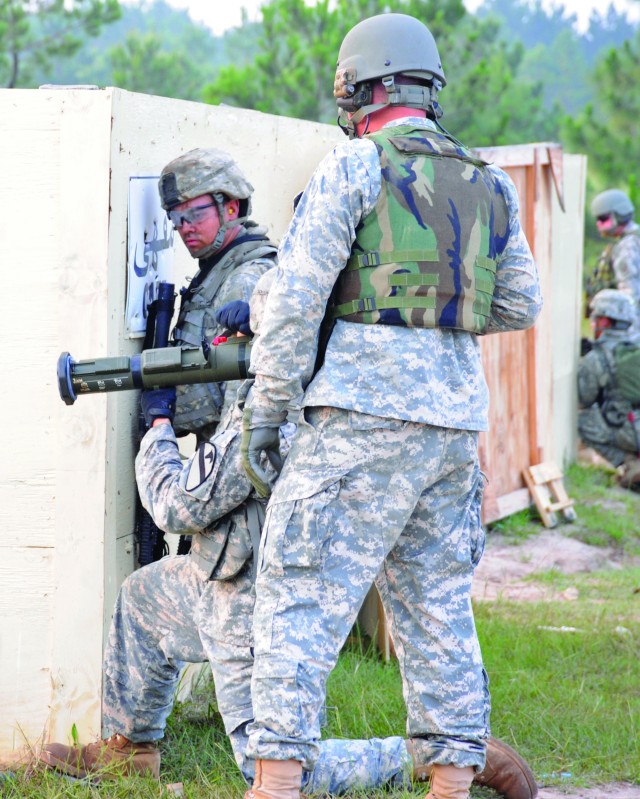
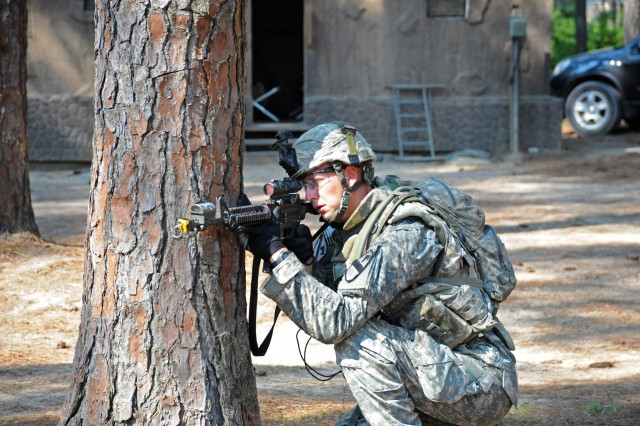

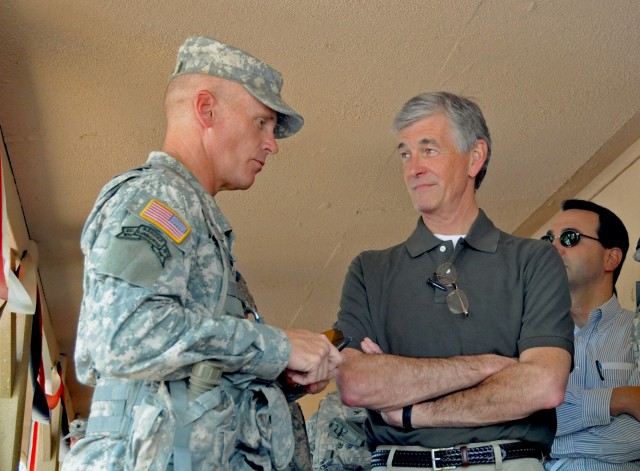


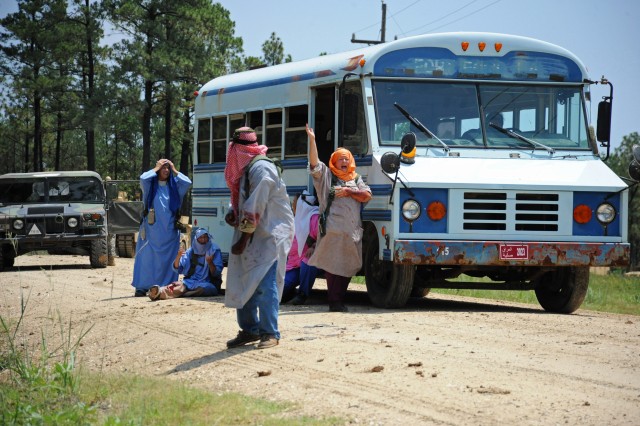
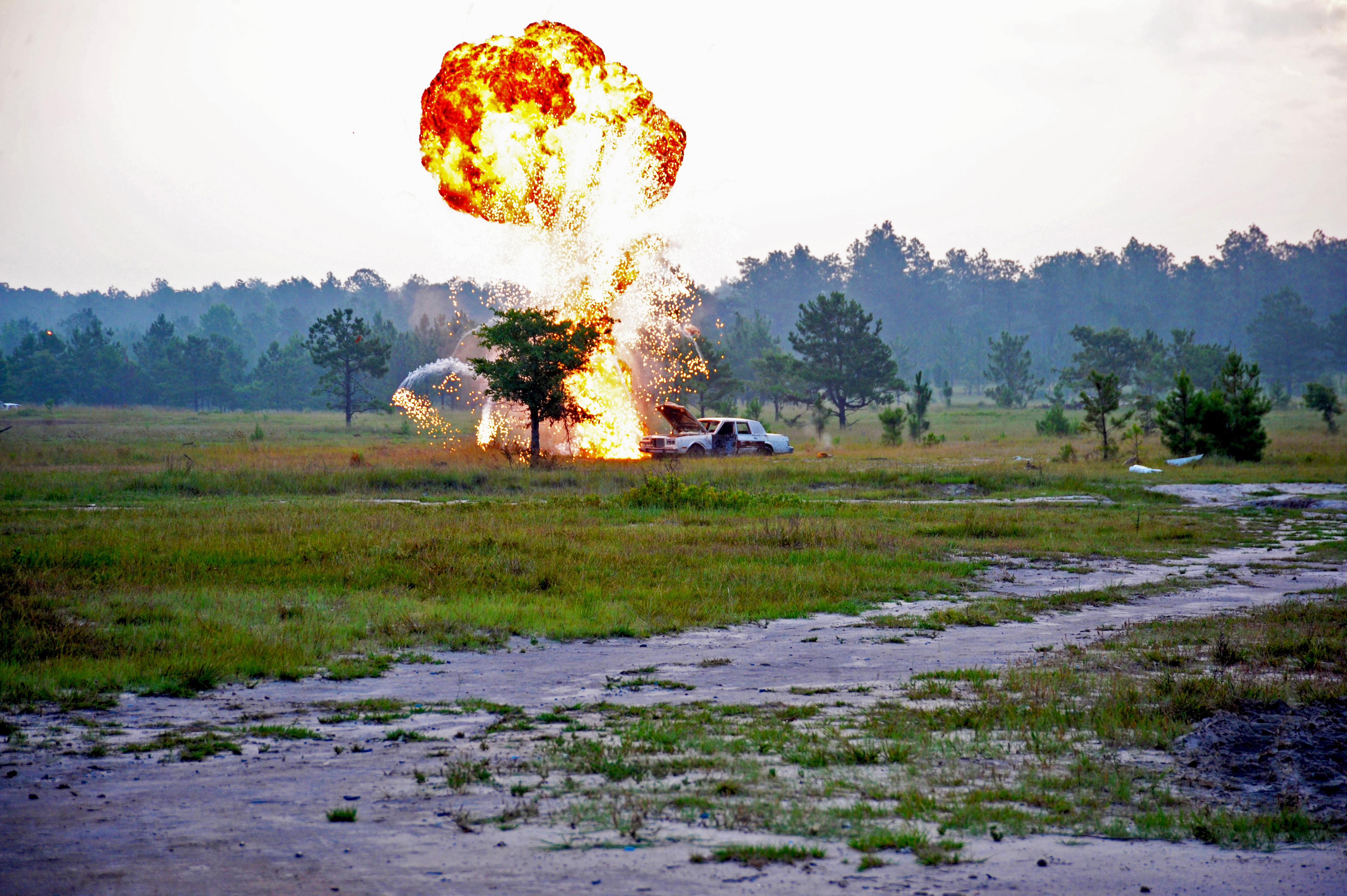
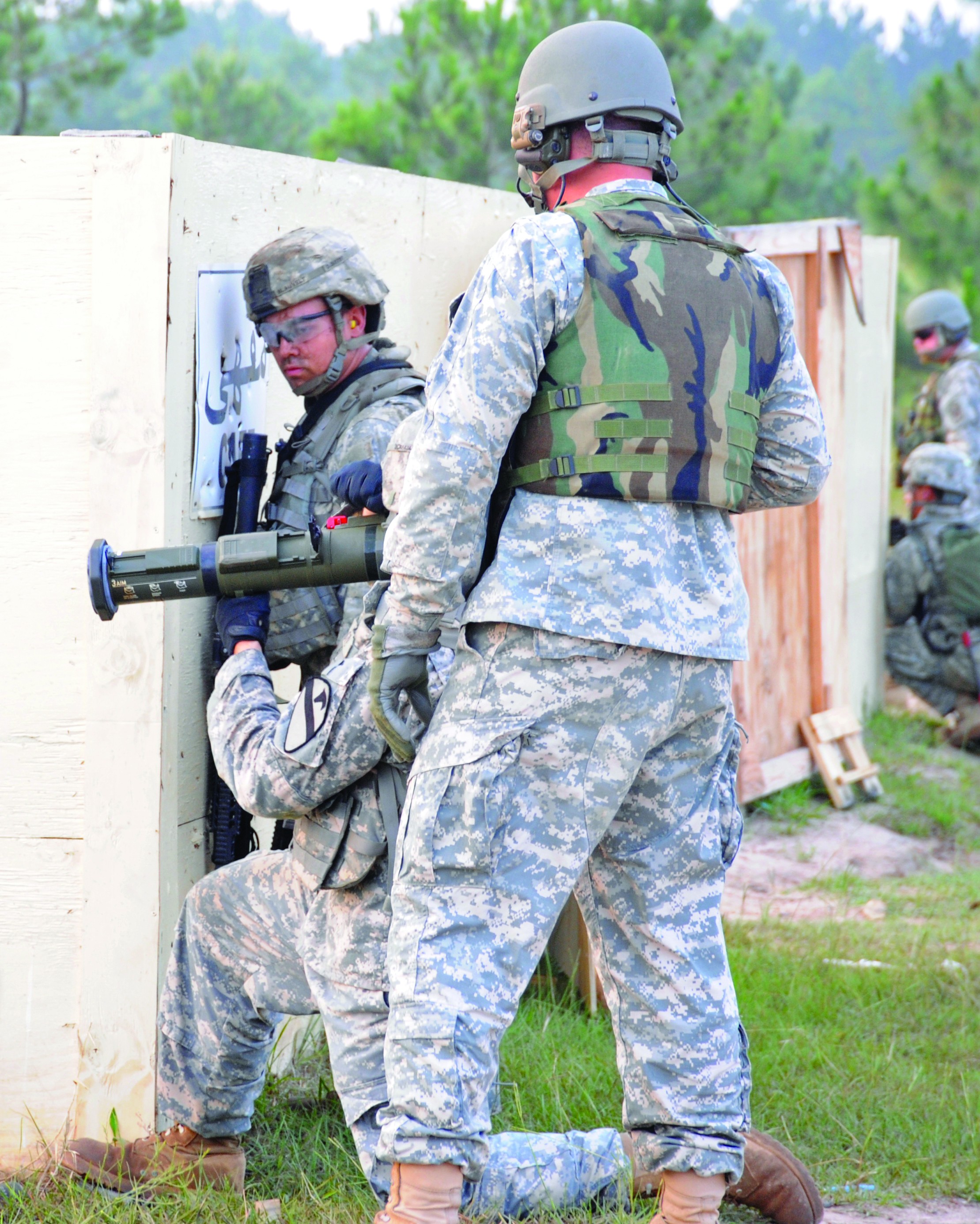




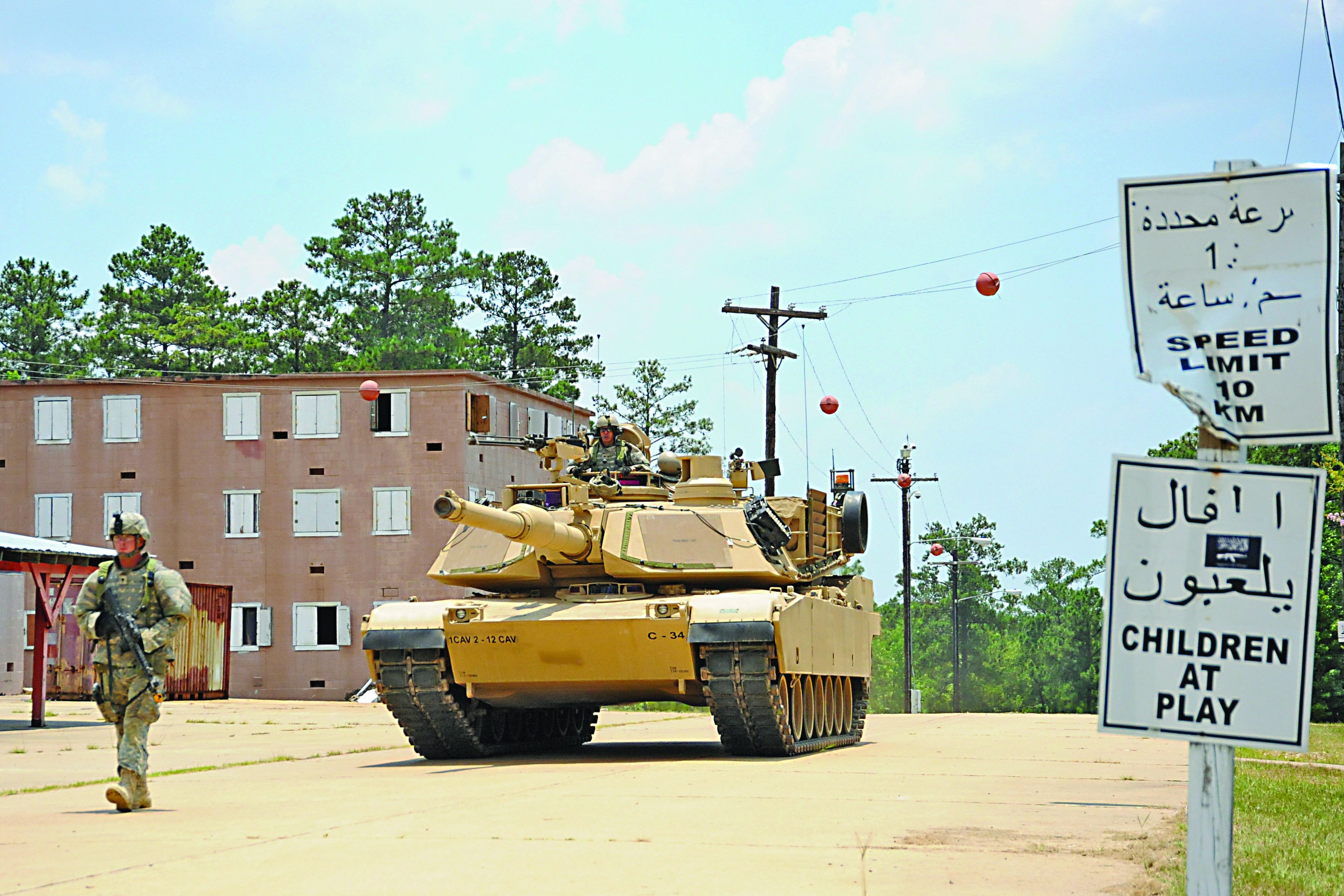

Social Sharing